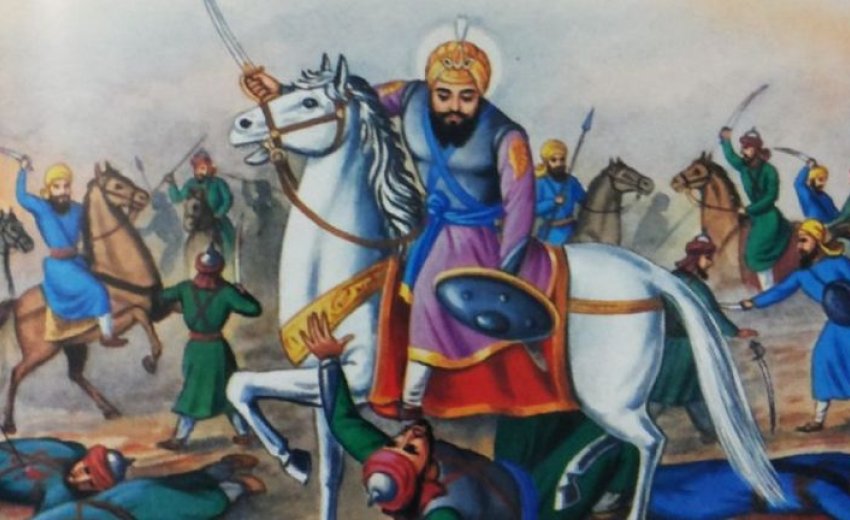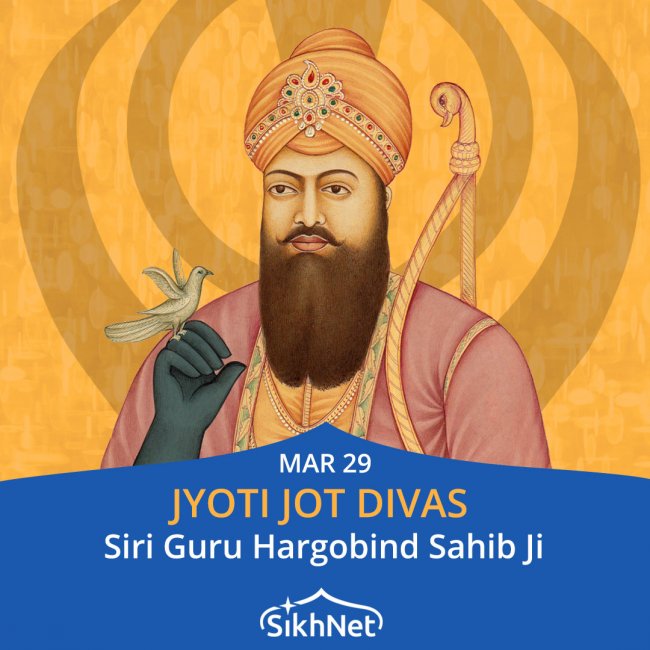"So far as Hargobind knew or thought of philosophy as a science, he fell into the prevailing views of the period: God, he said, is one, and the world is an illusion, an appearance without a reality,” wrote J.D. Cunningham, the first British historian to document Sikh history, in his book titled 'History of the Sikhs'.
While other Sikh gurus who are fondly remembered for their spiritual insights, Guru Hargobind Sahib (Nanak 6), is additionally credited for spearheading the militarisation of the religion.
Guru Hargobind was born in 1595, in Wadali, Amritsar. He was appointed as his father Guru Arjan Dev’s successor after Mughal Emperor Jahangir executed him. Historians maintain that Jahangir was threatened by the growing strength of the Sikh community and so summoned Guru Arjan Dev to Lahore. Preempting that he would never be able to return, Arjan Dev appointed his 11-year-old son, Hargobind, as the next Guru on 25 May 1606.
Over a month after his father’s execution, Guru Hargobind revealed himself in front of his devotees on 24 July 1606. He wore a saffron gown and a churidar pyjama, along with a turban and an aigrette pinned on it. He also donned a belt that held two swords from his waist. At the time, Guru Hargobind said, “My rosary shall be the sword belt and on my turban, I shall wear the emblem of royalty.”
Convergence of power and spirituality
The swords worn by Guru Hargobind represented the philosophy of 'miri-piri'. Introducing this philosophy, Guru Hargobind explained that the first sword, miri, symbolised power, while piri represented spiritual skill.
Historical accounts reveal that Guru Hargobind emerged as both a spiritual teacher and a military leader. J.D. Cunningham, who also served as a British officer in India, wrote in his book,
“The temper and the circumstances of Hargobind both prompted him to innovation; he had his father’s death to move his feelings… Hargobind grasped a sword, and marched with his devoted followers among the troops of the empire, or boldly led them to oppose and overcome provincial governors or personal enemies.”
Guru Hargobind emphasised the need to develop a warrior spirit in the Sikh community because it was undergoing persecution from the Mughal rulers. In light of this threat, he mobilised an army and named it Sant Sipahi (saint soldiers). Cunningham’s book informs that he had a stable of 800 horses while “three hundred mounted followers were constantly in attendance upon him, and a guard of sixty matchlock-men secured the safety of his person, had he ever feared or though of assassination”.
Instituting the Akal Takht
Apart from reinventing Sikh traditions through militarisation, Guru Hargobind also instituted the Akal Takht (supreme seat) directly opposite Harmandir Sahib in Amritsar. The Takht emerged as a common space where Sikhs from all walks of life could share their grievances and address questions about their faith.
Sikh devotees also received hukumnamas (orders) from their gurus at the Akal Takht. While devotees sought Harmandir Sahib for answers to their inner being, they relied on the Akal Takht to seek their guru’s directions to the outside world. Instituting the Akal Takht was another one of Guru Hargobind’s measures to converge spiritual prowess with power.
Under Guru Hargobind’s rule, the Sikh army also managed to defeat emperor Jahangir’s successor, Shah Jahan. Hargobind fought three battles against the Mughal forces during Shah Jahan’s rule. His modest army was skillfully able to get the better of the mighty Mughal forces.
On 3 March, 1644, Guru Hargobind's light merged with the Infinite Light in Kiratpur, Punjab. His grandson Guru Har Rai became the seventh Sikh guru to continue his legacy.
Editor's note: This article has been lightly edited from it's original

